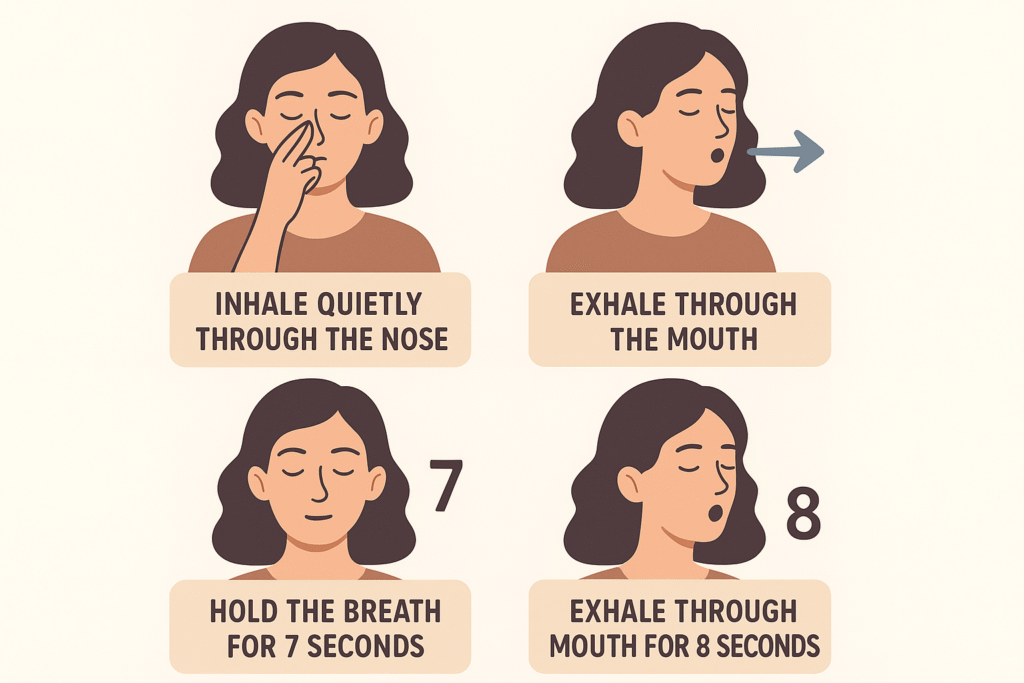Somatic Emotional Release, Proven Science for Healing Body & Mind

You know that feeling when someone mentions your ex and your chest immediately tightens? Or how your shoulders creep up to your ears during a stressful meeting? Honey, that’s not just in your head, that’s your body literally holding onto emotional experiences, and it’s more common than you think.
I’ve been diving deep into the science behind somatic emotional release lately, and let me tell you, the research is absolutely fascinating. As women, we’re often told we’re “too emotional” or “too sensitive,” but what if I told you that our bodies are actually incredibly wise storage systems for our emotional experiences? What if that tightness, that tension, those unexplained aches aren’t just random, they’re your body’s way of protecting you and keeping important information?
Somatic emotional release combines ancient body wisdom with cutting-edge neuroscience to help us heal from trauma, anxiety, and emotional pain in ways that traditional talk therapy alone often can’t reach. Today, we’re exploring exactly what the research reveals about this powerful healing approach and how you can start using these evidence-based techniques in your own life.

What is Somatic Emotional Release Therapy?
Let’s get real for a moment. Somatic emotional release isn’t some new-age fluff (though I totally understand if you’re skeptical I was too). It’s actually a scientifically-backed therapeutic approach that recognizes something profound: your emotions don’t just live in your mind they live in your entire body.
The word “somatic” comes from the Greek “soma,” meaning body, and this approach is all about working WITH your body’s natural wisdom rather than trying to think your way out of everything. You know how sometimes you can talk about a traumatic experience until you’re blue in the face, but you still feel that knot in your stomach or that heaviness in your chest? That’s because your body is holding information that your mind hasn’t fully processed yet.
According to Harvard Health, trauma can register within our bodies on a cellular level, and somatic therapy highlights how deeply painful experiences affect us and can be addressed through mind-body approaches. It’s like your body has its own memory system, and sometimes we need to speak its language to create real healing.

The Science Behind Somatic Emotional Release
Okay, so this is where it gets really interesting. For years, researchers have been studying exactly HOW our bodies hold onto emotional experiences, and the findings are mind-blowing.
The Polyvagal Theory: Your Nervous System’s Secret Language
Dr. Stephen Porges, creator of the Polyvagal Theory and Distinguished University Scientist at the Kinsey Institute, has revolutionized our understanding of how the autonomic nervous system especially the vagus nerve, plays in regulating our health and behavior.
Think of your vagus nerve as your body’s internal safety detector. It’s constantly scanning your environment and your internal state, deciding whether you’re safe to relax, need to fight or flee, or should shut down completely. The theory emphasizes that physiological states support different classes of behavior, for example, vagal withdrawal supports fight and flight mobilization behaviors, while increased vagal influence supports calm social engagement.
Here’s what blew my mind: when we experience trauma or overwhelming emotions, our nervous system can get “stuck” in these protective states. So that chronic anxiety you’ve been dealing with? That tendency to people-please until you’re exhausted? That might be your nervous system trying to keep you safe based on past experiences.
Your Body’s Emotional Filing System
Recent research has shown us that emotional experiences literally change our physiology. When we go through intense experiences, stress hormones flood our system, and if these experiences are overwhelming or repeated, they create lasting changes in how our nervous system responds.
But here’s the thing that really gets me excited: these changes aren’t permanent. Our brains and bodies have something called neuroplasticity, which means they can literally rewire themselves. This is where somatic emotional release becomes so powerful we’re not just talking about changing our thoughts; we’re actually helping our nervous systems learn new patterns of response.
Research published in the National Center for Biotechnology Information shows that body-based interventions can create measurable changes in brain structure and function, particularly in areas responsible for emotional regulation and stress response.

What the Latest Research Actually Shows
Now, let’s talk about the evidence, because I know you want to see the receipts (as do I!).
Real Studies with Real People
The first randomized controlled study evaluating Somatic Experiencing therapy for PTSD included 63 participants who met full DSM-IV criteria for the condition. The results? Participants who received somatic therapy showed significant improvements not just in their psychological symptoms, but in measurable physiological markers like heart rate variability and cortisol levels.
But what really excites me is the newer research. A 2023 study investigated Somatic Experiencing with breast cancer survivors for the first time, using eight weeks of web-based group sessions. This is huge because it shows how somatic approaches can help with medical trauma something so many of us women face but rarely talk about.
The Professional Training Research
A longitudinal study by Winblad, Changaris, and Stein (2018) followed professionals in somatic training over three years and found significant decreases in anxiety and somatization symptoms, plus substantial increases in physical and relational wellbeing. What I love about this study is that it shows the benefits aren’t just for people with diagnosed trauma, they’re for anyone wanting to develop a healthier relationship with their body and emotions.
Another study published in Frontiers showed significant reductions in anxiety symptoms and somatization symptoms in people who received Somatic Experiencing training. The researchers noted they’d love to include more laboratory-based measures of nervous system functioning in future studies, which tells me this field is growing and getting more sophisticated.
Why This Matters for Your Healing Journey
Let me share something personal with you. I used to think I was “broken” because traditional talk therapy, while helpful, never seemed to touch that deep, persistent anxiety that lived in my chest. I could understand my trauma intellectually, but my body was still reacting like it was happening all over again.
Trauma Recovery That Actually Works
The body-oriented approach of somatic emotional release treats post-traumatic symptoms by changing the interoceptive and proprioceptive sensations associated with the traumatic experience. In plain English?
It helps you literally feel different in your body when you think about or encounter reminders of difficult experiences.
This is especially important for those of us who’ve experienced complex trauma, those repeated experiences that often happen in relationships or during childhood. Our nervous systems developed their protective patterns early, and somatic work offers a way to gently update those patterns at the physiological level.
The International Society for Traumatic Stress Studies recognizes body-based approaches as effective treatments for PTSD, particularly when combined with other therapeutic modalities.
Beyond Just “Managing” Anxiety
What I find most hopeful about this research is that we’re not just talking about managing symptoms, we’re talking about actually rewiring how our nervous systems respond to stress. When you develop what researchers call “interoceptive awareness” (basically, the ability to sense what’s happening inside your body), you gain access to information that can help you make better choices for your wellbeing.
Think about it: how often do you push through exhaustion, ignore your body’s hunger cues, or override that gut feeling that something isn’t right? Somatic emotional release teaches you to listen to and trust your body’s signals again.
Studies from the American Psychological Association show that people with higher interoceptive awareness have better emotional regulation, improved decision-making, and stronger resilience to stress.
Getting Started: Gentle Ways to Begin
The beautiful thing about somatic emotional release is that you can start right now, right where you are. You don’t need special equipment or years of training, just curiosity about your own experience.

Simple Nervous System Reset Techniques
The 4-7-8 Breath (my personal favorite): Breathe in for 4 counts, hold for 7, exhale for 8. This isn’t just relaxing, it actually activates your parasympathetic nervous system, telling your body it’s safe to rest.
Feel Your Feet: Seriously, just notice your feet touching the ground. Press them down a little. This simple grounding technique can interrupt anxiety spirals and bring you back to the present moment.
The Gentle Shake: Animals naturally shake after escaping danger to discharge the energy mobilized during threat. We can do this too—just let your body shake gently, starting with your hands and letting it spread naturally.
Body Awareness Practices That Actually Work
The Body Check-In: Throughout your day, pause and ask, “How is my body feeling right now?” Don’t try to change anything,just notice. This builds that crucial interoceptive awareness.
Sensation Tracking: When you feel strong emotions, get curious about the physical sensations. Where do you feel anger in your body? What does sadness feel like physically?
This isn’t about making it go away, it’s about learning your body’s language.
Movement That Feels Good: This isn’t about exercise routines, it’s about letting your body move in whatever way feels nourishing. Maybe that’s gentle stretching, maybe it’s dancing in your kitchen, maybe it’s just rolling your shoulders.

Questions I Get Asked All the Time
“Is this safe for everyone?” While somatic approaches are generally gentle and safe, if you have a history of severe trauma, I’d recommend working with a qualified practitioner who has specialized training. Sometimes when we start paying attention to our bodies, intense emotions or memories can surface, and having professional support can be incredibly valuable.
“How long before I see results?” Many people notice immediate benefits in terms of relaxation and stress relief. But deeper nervous system changes typically develop over weeks to months of consistent practice. Be patient with yourself—you’re literally rewiring patterns that may have been in place for years.
“Can I do this instead of therapy?” Somatic work can be incredibly powerful on its own, but it often works beautifully alongside other forms of therapy. Think of it as adding another tool to your healing toolkit rather than replacing everything else.
The Real Talk About Healing
Here’s what I want you to know: your body isn’t betraying you when it holds tension, feels anxious, or reacts strongly to certain situations. It’s actually trying to protect you based on what it has learned from your experiences.
The research shows us that somatic emotional release can significantly reduce anxiety, improve emotional regulation, support trauma recovery, and enhance overall wellbeing. But beyond the studies, what matters is how you feel in your own skin.
Your body holds wisdom. It has kept you alive through every difficult experience you’ve faced. Somatic emotional release isn’t about fixing what’s “wrong” with you, it’s about learning to listen to and honor the intelligence that’s been there all along.
The science confirms what many of us have always known deep down: we are not separate from our bodies, and true healing happens when we bring mind and body into harmony.
Your nervous system can learn new patterns. Your body can feel safe again. Somatic emotional release is one proven path toward that healing, and you, you have everything within you that you need to begin.
References
- Gerke, A., Jerg-Bretzke, L., Manzey, D., & Traue, H. C. (2023). Evaluating Somatic Experiencing® to Heal Cancer Trauma: First Evidence with Breast Cancer Survivors. International Journal of Environmental Research and Public Health, 20(14), 6412.
- Brom, D., Stokar, Y., Lawi, C., Nuriel‐Porat, V., Ziv, Y., Lerner, K., & Ross, G. (2017). Somatic Experiencing for Posttraumatic Stress Disorder: A Randomized Controlled Outcome Study. Journal of Traumatic Stress, 30(3), 304-312.
- Harvard Health Publishing. (2023, July 7). What is somatic therapy? Harvard Health Blog.
- Porges, S. W. (2011). The polyvagal theory: New insights into adaptive reactions of the autonomic nervous system. Cleveland Clinic Journal of Medicine, 76(Suppl 2), S86-S90.
- Kuhfuß, M., Maldei, T., Hetmanek, A., & Baumann, N. (2021). Somatic experiencing – effectiveness and key factors of a body-oriented trauma therapy: a scoping literature review. European Journal of Psychotraumatology, 12(1), 1929023.
- Winblad, N. E., Changaris, M., & Stein, P. K. (2018). Effect of Somatic Experiencing Resiliency-Based Trauma Treatment Training on Quality of Life and Psychological Health as Potential Buffers for Nursing Burnout. Frontiers in Neuroscience, 12, 70.





